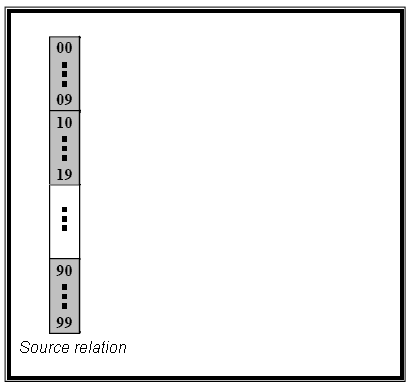| |
Introduction
Presently the trade world purchased new direction is electronic commerce. This branch of trade collects turns with enormous speed, being ahead of all. Electronic commerce does not have scopes of time and place
She allows sellers to have shops which are constantly opened, does not have physical scopes, temporal belts, does not require enormous buildings and personnel for service. The unique problem from the pas is defense of the system the Internet of payments.
Advantages of transacting shippings over the internet many companies felt already now. It is related to advantages which will be got by a firm after application of Internet-technology.
There is a great number of advantages, here only some of them:
• the operativeness of receipt of information is considerably multiplied, especially at international operations;
• the cycle of production and sale is considerably abbreviated, as anymore there is not a necessity each time to enter the got documents, probability of origin of errors of input goes down besides;
• expenses, related to the exchange information due to the use of more cheap facilities of communications, go down considerably;
• the use of Internet-technology of electronic commerce allows companies to become more opened in relation to clients;
• allows easily and quickly to inform partners and clients about products and services;
• allows to create the alternative channels of sales, for example, through an electronic shop on a corporate site.
Realization of the system of site of electronic commerce
Realization of the system of e-commerce will be specific for every set problem. However there are general lines in every decision:
— klient-server technology
— use of databases
— presence of scripts, processing the actions of user
Most often meetings decisions on a today's moment in it:
— Internet-shops
— auction row
Internet shop is a shop the proprietor of Web-server and shop is the same firm.
An auction row is an aggregate of shops, the proprietors of which are different firms, leasings a place on a Web-server which belongs to the separate company.
For realization each of the offered projects it is necessary to pick up an own programmatic, vehicle, technological decision.
Use of the distributed and parallel database for realization of Internet shop
At creation of Internet-shop there is a problem of the productivity, which consists of tom, that at plenty of users and large volume of database time of response increases and appears probability togo, that the system will not manage with such loadings. For the decision of this problem replikation, table breaking up of database, parallel queries on a computer cluster network is used.
The relational model of data, applied in all modern databases, by the best appearance befits for parallel queries and distributing of database on a few knots of network. In the most general form this process can be described as follows. Every relation divides by fragments in accordance with some rule, determined kesh-funktion. Each of fragments is disposed on a separate knot (such knots are named the knots of information). A query is used not to the relation on the whole, but to these fragments. Thus every fragment is processed on a separate processor. Results, got in the total, are united in a common resulting relation, as it is shown on a picture 1. Thus, breaking up a relation on n fragments in the parallel machine of database, we get diminishing of time of implementation of query in n of one times.

Picture 1 — Execution of parallel query
In the case of death one of knots of information of the system, it is possible to use his copy for implementation of queries, that allows not to interrupt works of the system in a time of renewal of unworking knot of information. Probability togo, that sazu will say no a few knots of information, keepings identical information, considerably less, than in the case of one knot, that eliminates single sharpen refusal. In addition, replikation allows to execute parallel different queries to identical information, that multiplies time of response of the system upon request of user (interquery parallelism).
In the case of replikation of information there is a question about synchronization of information on initial knots and their remarks. In connection with that for Internet-shop characteristic is to, that the operation of reading from the base of information is made much more frequent, than its change, on some small interval of time we can ignore actuality of information on some knot. Recovery of data will take place through the set time in accordance with changes, made on all knots after the last synchronization of information.
Use of cluster for organization of the distributed and parallel database
A cluster is a group of the independent systems, workings together, as single system. A client co-operates with a cluster how as though a cluster is a single server, even if he is uniting a few servers physically. Cluster configurations are used for providing of high readiness, simplification of management and multiplying scaled.
A cluster can be effectively used for organization of parallel databases. The high testimonies of the productivity of cluster are achieved due to the partition of load between a few physical servers and use of main memory for storage of data.
A cluster allows to multiply potential of the system at treatment of large volumes of information or large number of queries due to the partition of load between a few servers of database. Also principle of organization of the system is given by possibility to enter and destroy from work one of servers, to conduct on him prophylactic works or to multiply the number of servers without disconnecting of appendix.
List of literature
1. Чардин П. Многоверсионность данных и управление параллельными транзакциями. Сокращенный вариант статьи опубликован в журнале "Открытые системы". Ссылка: http://www.citforum.ru/database/articles/multiversion/
2. Костенецкий П.С., Лепихов А.В., Соколинский Л.Б. Некоторые аспекты организации
параллельных систем баз данных
для мультипроцессоров с иерархической архитектурой. Ссылка:http://omega.sp.susu.ac.ru/books/sok/papers/sources/KostenetskyLS-06.pdf
3. Электронная коммерция. Ссылка: http://e-comm.net.ru/5.html
4. Реализация системы сайта электронной коммерции Ссылка: http://www.getinfo.ru/article200.html
|
